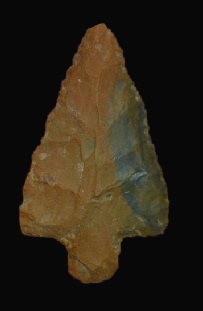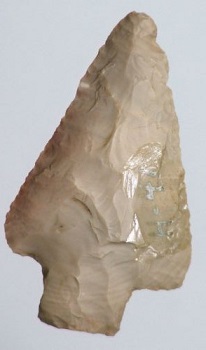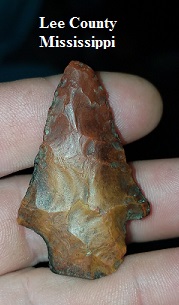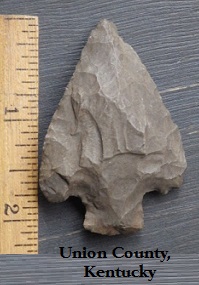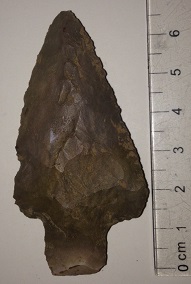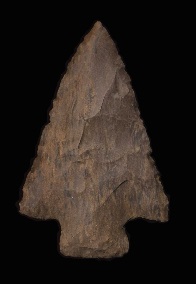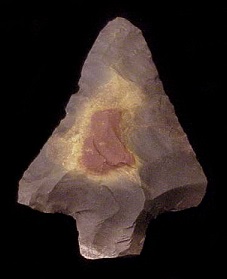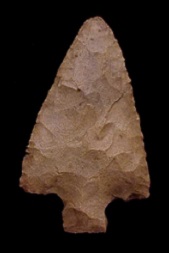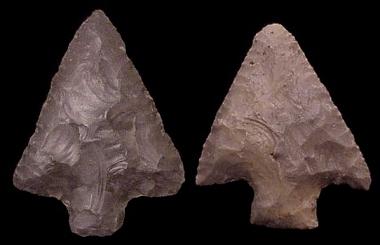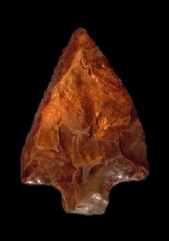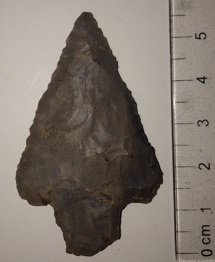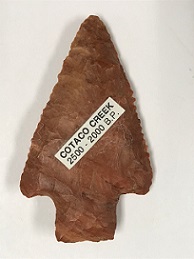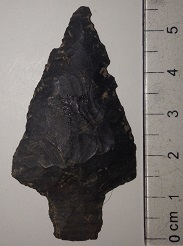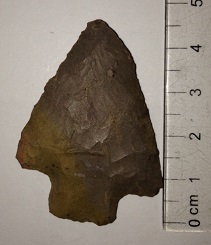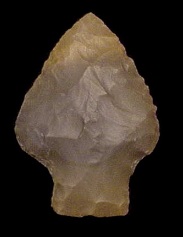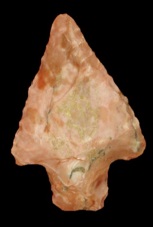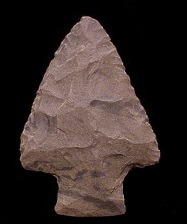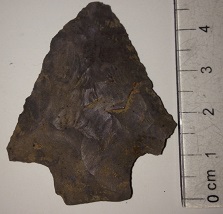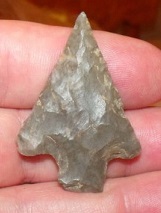Outline is Representative of Size and Shape:

Name Details:
Identified By: David DeJannette, Edward Karjack, James Cambron
Named For: Type Site Location
Date Identified: 1962
Type Site: Multiple sites along Cotaco Creek, Morgan County, Alabama
Identified By: David DeJannette, Edward Karjack, James Cambron
Named For: Type Site Location
Date Identified: 1962
Type Site: Multiple sites along Cotaco Creek, Morgan County, Alabama
Point Validity:
Valid type
Dejarnette what the first Anthropologist hired by the University of Alabama and was an expert on southeastern archaeology. Kurjack studied Alabama archaeology as a graduate student at the University of Alabama and went on to become an expert on Mayan anthropology. Cambron is a distinguished avocational archaeologist that did extensive work in Alabama and the Tennessee River valley. This point was named in a professional book. This point has been referred to in numerous professional publications and is considered a valid type.
Dejarnette what the first Anthropologist hired by the University of Alabama and was an expert on southeastern archaeology. Kurjack studied Alabama archaeology as a graduate student at the University of Alabama and went on to become an expert on Mayan anthropology. Cambron is a distinguished avocational archaeologist that did extensive work in Alabama and the Tennessee River valley. This point was named in a professional book. This point has been referred to in numerous professional publications and is considered a valid type.
Cotaco Creek Stemmed
Cluster: Description of Physical Characteristics and Flaking Pattern:
This is a medium to large(1.75 to 3.75 inches) triangular stemmed point. The cross section may vary from flattened to rhomboid. The blade is broad and primarily straight with fine serrations, while other examples may have an excurvate blade or a incurvate blade with examples that have a flaring shoulder edge. Regardless of the blade shape, the blade most commonly is finely serrated and may be beveled. The shoulders are primarily slightly upward angled, but may be horizontal or slightly barbed. The stem is short and commonly seen as straight, but may be contracting. The base is straight, but may have a slight convex to slight concave form. The base is thinned and hafting region grinding being present. This point is made using well controlled broad shallow percussion flaking with fine pressure flaking used to retouch the edges forming a random flaking pattern.
Size Measurements:
Total Length - 47 to 83 mm (64 mm average), Stem Length - 65 to 14 mm (10 mm average), Blade Width - 33 to 45 mm (40 mm average), Stem Width - 14 to 19 mm (16 mm average), Thickness - 6 to 7 mm
Total Length - 47 to 83 mm (64 mm average), Stem Length - 65 to 14 mm (10 mm average), Blade Width - 33 to 45 mm (40 mm average), Stem Width - 14 to 19 mm (16 mm average), Thickness - 6 to 7 mm
Commonly Utilized Material:
Fort Payne Chert, Bangor Nodular Flint, jasper, and other local materials.
Fort Payne Chert, Bangor Nodular Flint, jasper, and other local materials.
Additional Comments:
Distribution: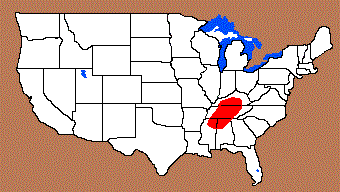
Distribution Comments:
This point is primarily found in the Tennessee River Valley of northern Alabama and into south central Tennessee. Frequency decreased in the remaining regions of the Tennessee River Valley and adjacent regions.
This point is primarily found in the Tennessee River Valley of northern Alabama and into south central Tennessee. Frequency decreased in the remaining regions of the Tennessee River Valley and adjacent regions.
Age / Periods:
Date: 3,500 - 2,500 B.P.
Cultural Period: Late Archaic to Early Woodland
Glacial Period: Neoglacial
Culture:
Date: 3,500 - 2,500 B.P.
Cultural Period: Late Archaic to Early Woodland
Glacial Period: Neoglacial
Culture:
Age Details:
Similar Points:
Abbey, Broad River, Cottonbridge, Flint Creek, Kirk Serrated, Little Bear, Pickwick, Smithsonia, Wacissa
Abbey, Broad River, Cottonbridge, Flint Creek, Kirk Serrated, Little Bear, Pickwick, Smithsonia, Wacissa
Other points in this cluster / Related / Associated Points:
Cotaco Wright, Cotaco Creek Blade, Ledbetter, Mulberry Creek
Cotaco Wright, Cotaco Creek Blade, Ledbetter, Mulberry Creek


